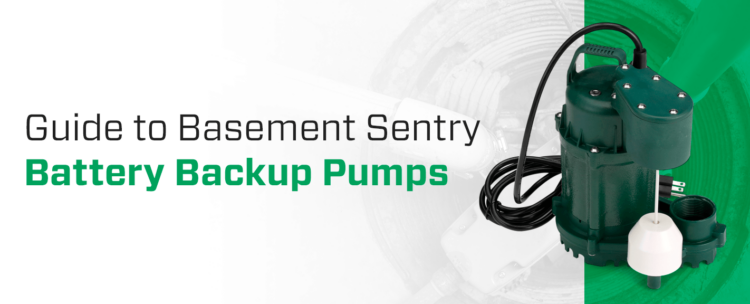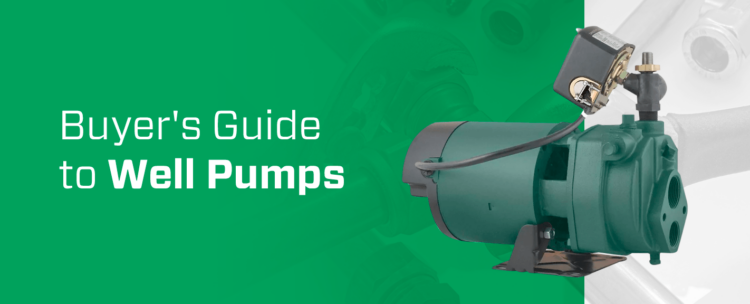
Sump pumps are a practical investment for any home, especially in regions with storms and hurricanes. Preparing your sump pump before hurricane season is the best way to know you can rely on it to pump away water and run-off. During a storm, there’s a lot you as a homeowner need to worry about — but flooding won’t be one of them when you know your sump pump can do its job.
This guide will teach you how to test if your sump pump is working before and during stormy weather and throughout hurricane season.
What’s the Point of a Sump Pump?
A sump pump is a device that directs rainwater away from your home’s foundation to prevent flooding. This device is installed in the lowest level of a home, most commonly the basement. During rainstorms, sump pumps prevent water from collecting in these low points, working as a layer of protection against floods. As a result, having a sump pump is a smart idea for any homeowner, but especially those in places that experience hurricane season or heavy rainfall.
Things to Know About Sump Pumps
It’s important to note that a sump pump takes time to drain rainwater, especially after a heavy storm. In some cases, your sump pump may run for two to three days after a storm. This is normal and simply means that a lot of water needs to be diverted from your house. If your sump pump continues running for several days, you may need to contact a plumber to ensure there’s nothing wrong with it.
Once the rain stops or no water is left to drain, you should turn your sump pump off. This keeps the pump from overexerting itself, overheating and damaging itself from overuse. Always keep your pump running during a storm, heavy rain and hurricane warnings.
A sump pump is a great way to avoid flooding damage, but you still need to do more to ensure flooding doesn’t occur. For example, flooding can still happen if your gutters are clogged or you have a faulty downspout. Be sure to pay attention to potential causes of flooding in your home beyond what your sump pump can cover to keep your home free of flooding.

How to Perform a Sump Pump Test
During hurricane season, you need to know you can rely on your sump pump to keep your home dry. As a result, you’ll want to complete a sump pump test — ideally before hurricane season, so you can address any issues that might come up. The below steps will show you how to properly test your sump pump’s activity and ensure it’s functioning reliably.
1. Perform an Inspection of the Pump
Before you start testing your sump pump, you need to inspect it. Your pump will turn itself on and displace any excessive groundwater above and around the foundation. Listen for this to make sure it’s still working.
Then, remove the cover and check inside the sump pit. If the water level is low, that’s a sign your pump is working as it should be. Next, observe the sump pump and the cover for any signs of physical damage or wear and tear. This includes checking for debris, obstructions and any loose components. Make sure the valve is working properly, as well.
2. Test Electrical Components
Your sump pump needs to be plugged into a ground fault circuit interrupter. This will keep it safe from potential power issues that may happen during storms and when submerged in water. An alternative to this is unplugging your pump and plugging it back in during these conditions, which is a more manual approach to what the interrupter would do.
Consider installing a battery backup system for your sump pump. In case of an emergency or loss of power, your sump pump will continue to operate with a battery-powered backup system. If you choose to use a battery backup system, change the battery every two to three years and test the backup before hurricane season arrives.
3. Flush the Sump Pit
Your sump pit is effectively a hole that collects water in the floor of your basement or crawlspace. Be sure to flush your sump pit as part of your sump pump test and hurricane season preparation.
Use a bucket with 5 gallons of water in it and slowly pour it around your sump pump. Your sump pump will then turn on once the water level exceeds the predetermined limit on the floor.
If your sump pump doesn’t turn on, it’s a sign that it may be damaged or clogged. Your best bet is to call a plumber to help you unclog or repair your sump pump.
Cleaning and Maintenance Tips
The best way to prepare your sump pump for hurricane season is to keep it well-maintained and clean. You should inspect your pump at least once a year before hurricane season. It’s critical to keep an eye out for any trapped mud or anything that might interrupt the water flow.
The life span of an average sump pump is about a decade, so you should replace your pump every 10 years to make sure the hardware you’re using is still reliable. Well-used pumps that are frequently running should be replaced every five to seven years to be safe.

Shop Zoeller Sump Pumps Today
A sump pump is your home’s best defense against flooding during heavy rainfall and hurricane season. Put your trust in a high-quality, user-friendly sump pump that’s easy to maintain and will last the test of time. Zoeller at Home has an expansive range of trustworthy sump pumps that every homeowner can rely on.
Contact us to find out more about the sump pumps and backup sump systems we can offer you. Ready to invest in a sump pump that will help keep your home dry? See where you can find a Zoeller sump pump in a retailer near you. We want to help you protect your home with the right equipment for the job.



